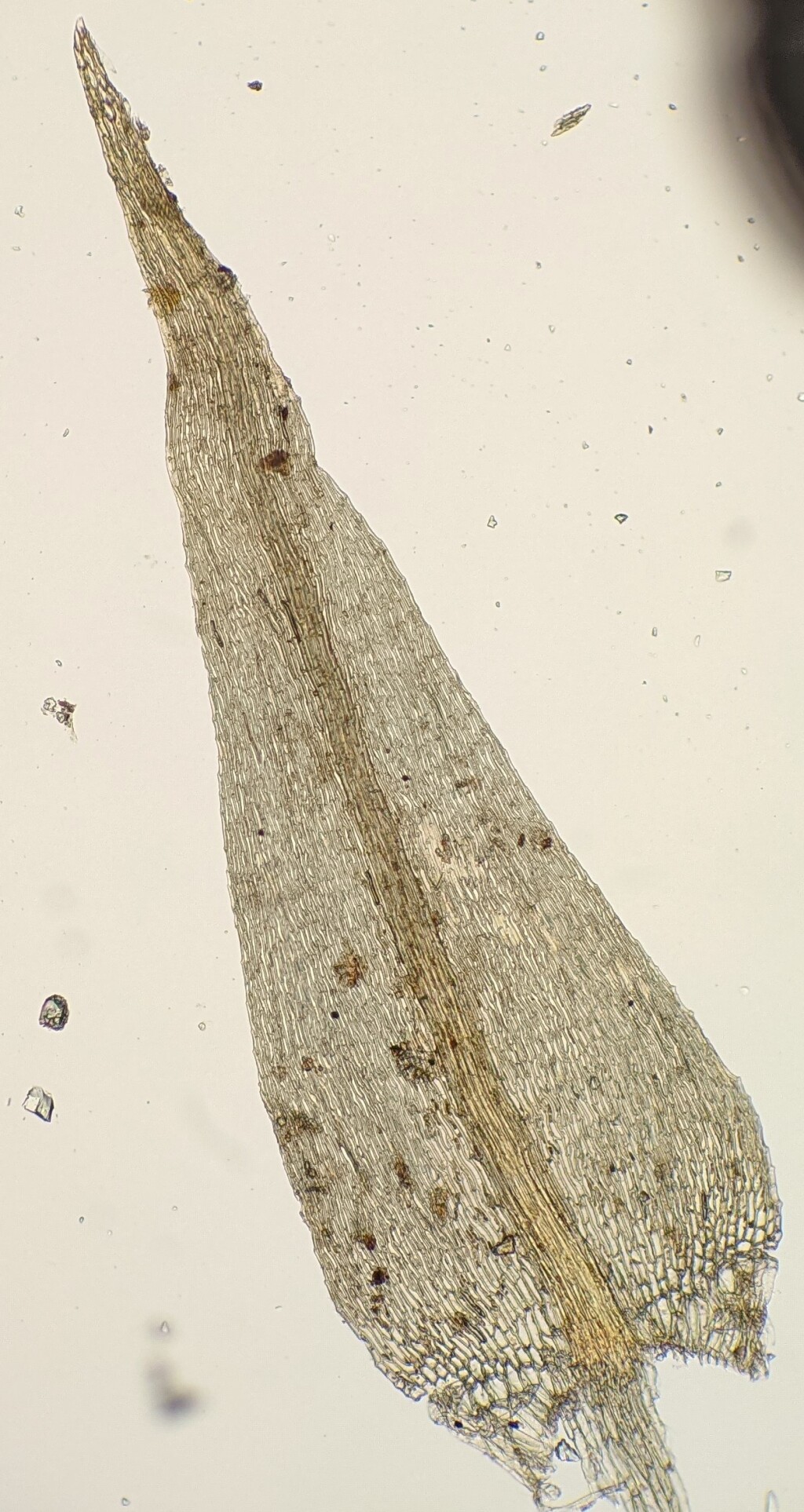Calliergonaceae
Autoicous or dioicous. Asexual reproduction by detached stems. Wefts or mats on soil or rocks, usually aquatic. Stems creeping or ascendent, simple or irregularly, radially or pinnately branched, with sparse rhizoids at or below leaf insertions; paraphyllia absent; pseudoparaphyllia present, foliose; central strand present or absent (not in Victoria). Leaves monomorphic or branch leaves smaller and sometimes narrower than stem leaves, straight or falcate, erect or erect spreading when moist, scarcely altered when dry, often bearing rhizoids; apex obtuse (not in Victoria), acute (not in Victoria) or acuminate, without a hairpoint; costa short and double (not in Victoria) or single and terminating apical half or rarely just short of mid-leaf, or rarely absent (not in Victoria); margin entire (not in Victoria) or denticulate, plane, without a border; laminal cells linear, smooth or prorulate; alar cells not differentiated (not in Victoria) or differentiated, quadrate to rectangular, often hyaline and inflated. Pleurocarpous. Capsule inclined or horizontal, curved, exserted, operculate, with or without (not in Victoria) an annulus. Calyptra cucullate, smooth, glabrous. Operculum conic. Peristome double and alternate; exostome of 16 entire teeth, reticulate at base on outersurface; endostome of 16 segments, with a high basal membrane; cilia present.
Cosmopolitan, with seven genera and around 23 species (Hedenäs et al. 2005); two genera and species in Victoria.
Calliergonaceae have previously been included in the Amblystegiaceae, however, the Calliergonaceae as treated here form a group that is most likely more closely related to other pleurocarp families than it is to Amblystegiaceae (Vanderpoorten et al. 2002a, b; Huttunen et al. 2012). The Calliergonaceae can be distinguished morphologically from the Amblystegiaceae by the reticulate external surface of the bases of the exostome teeth and the leaf-borne rhizoids that can be present in most Calliergonaceae (Hedenäs 2014).
 Spinning
SpinningHedenäs, L. (2014). Calliergonaceae, in Flora of North America Editorial Committee (eds), Flora of North America, vol. 28: Bryophyta, part 2, pp. 384–403. Oxford University Press, New York.
Hedenäs, L.; Oliván, G.; Eldenäs, P. (2005). Phylogeny of the Calliergonaceae (Bryophyta) based on molecular and morphological data. Plant Systematics and Evolution.
Huttunen, S. et al. (2012). Disentangling knots of rapid evolution: origin and diversification of the moss order Hypnales. Journal of Bryology 34: 187–211.
Vanderpoorten, A.; Hedenäs, L.; Cox, C.J.; Shaw, A.J. (2002a). Phylogeny and morphological evolution of the Amblystegiaceae (Bryopsida). Molecular Phylogenetics and Evolution 23: 1–21.
Vanderpoorten, A.; Hedenäs, L.; Cox, C.J.; Shaw, A.J. (2002b). Circumscription, classification and taxonomy of Amblystegiaceae (Bryopsida) inferred from nuclear and chloroplast DNA sequence data and morphology. Taxon 51: 115–122.

